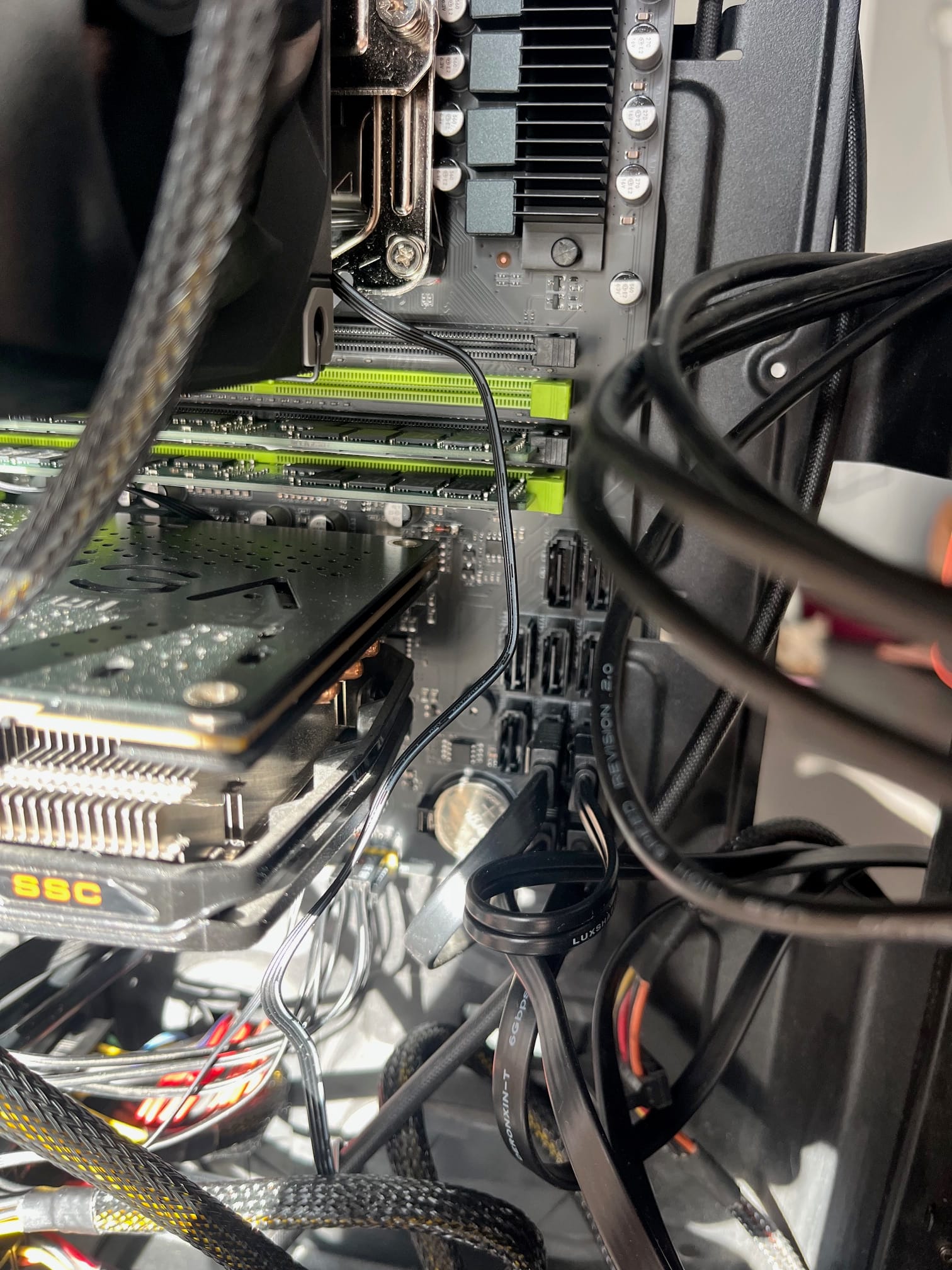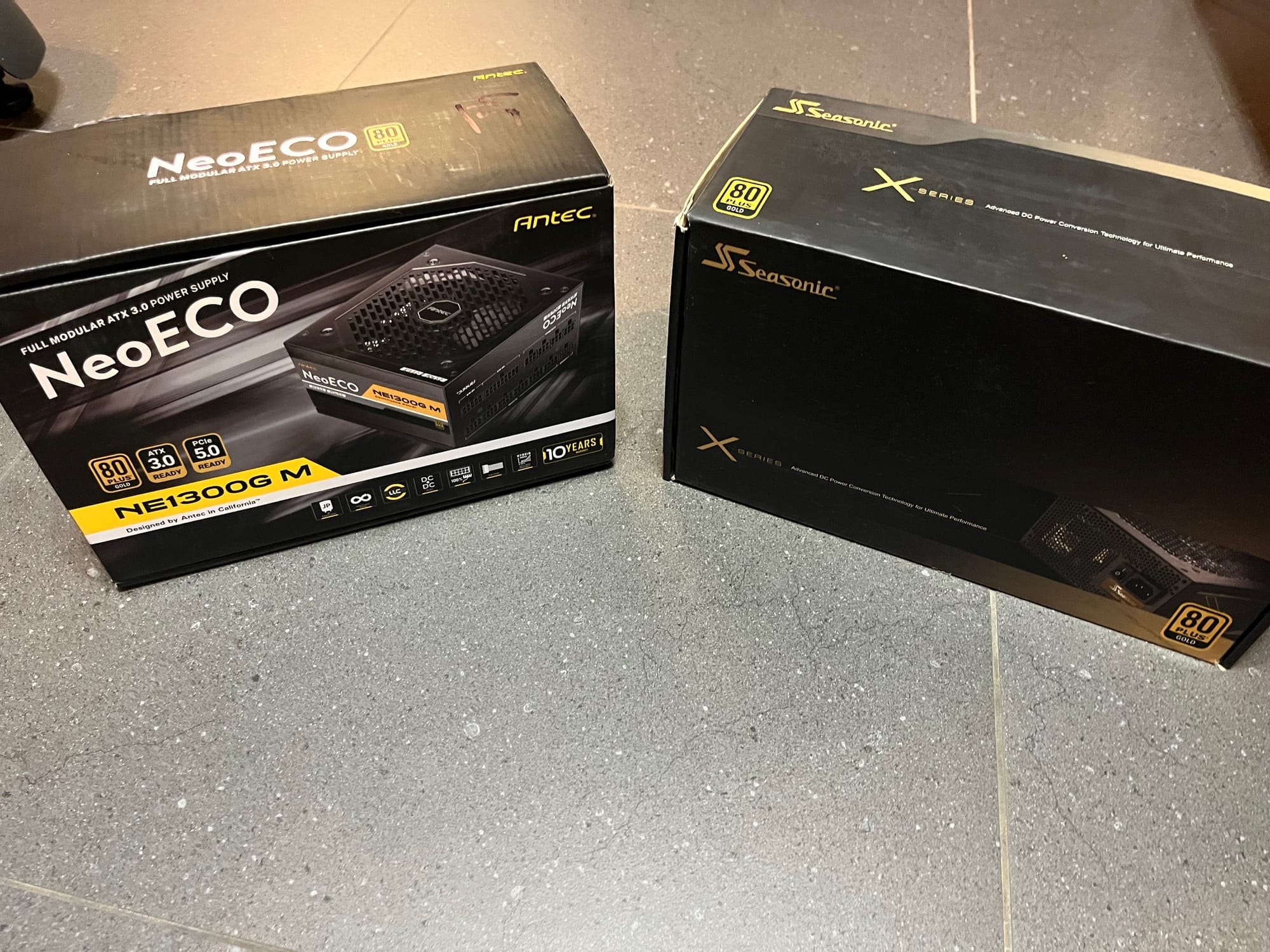1. Almost Ready… But Not Quite
As I mentioned before, my so-called AI “supercomputer” (quotation marks mandatory) was nearly ready for action. I was preparing to install the operating system… but there was one small, GPU-shaped problem.
Before moving forward, I needed to settle the question: which graphics card should I choose?

2. A Game of Slots
My motherboard isn’t exactly generous when it comes to space. On the right side, there’s a row of SATA ports. Between the PCIe slots, there are just two tiny gaps. And after the last PCI slot? That’s it. The end of the board. Right after that, all the connectors for USB, power buttons, and reset buttons are squeezed in like sardines.
Translation: using the bottom slot might be physically impossible.
After hours of research (and re-checking my findings another 20 times, because paranoia is free), I discovered the hard truth: my board only supports PCIe 3.0. Not 4.0, and definitely not the shiny new 5.0.
That meant all the fancy modern NVIDIA 40xx and 50xx series were out of the question. My suspects narrowed down to the 20xx series.

3. Meet the Candidate: RTX 2080 Ti
The strongest card in the 20xx family is the legendary RTX 2080 Ti, with its glorious 11 GB of VRAM.
At first, I was a little disappointed. I had dreams of loading models up to 24 GB, maybe even running a few AAA games at high settings during weekends. But reality hit me like a blue screen of death. Eleven gigs is fine… but not magical.
On the bright side, the 2080 Ti seemed to fit into my cramped motherboard layout. Even better, I might eventually try adding a second one later and connecting them with NVLink (formerly known as SLI, for us old-schoolers). That could be fun… or a very expensive mistake. Time will tell.

4. Power Struggles
There was another problem. My old power supply, rescued from the original PC, suddenly didn’t feel trustworthy anymore. The last thing I wanted was to rebuild everything from scratch because of power issues.
So, I bit the bullet and bought a brand-new 1300W power supply for about 800 shekels (~$215). Definitely not part of the “budget” in my budget AI server, but hey… sometimes you just have to pay to keep the magic smoke inside the components.

5. Lessons Learned: Plug Everything Early
While installing my placeholder GPU (the humble NVIDIA GTX 960) into the top PCIe slot, I realized something important: always connect all SATA cables before the GPU goes in.
Why? Because once that graphics card is installed, there’s no room left to sneak in the cables. Unless, of course, you enjoy uninstalling and reinstalling GPUs like some kind of cursed puzzle game.
So I plugged in every SATA cable I could find—even the ones not currently in use—just to make sure I won’t cry later when adding more drives.
6. The Price of Dreams
Here’s the painful part: budget GPUs don’t exist. At least, not when you’re looking for something decent. After hunting for deals, I finally ordered an NVIDIA RTX 2080 Ti with 11 GB VRAM from Dell Alienware on eBay for around 1,500 shekels (~$400).
And because I live in Israel, I’ll probably have to add another 300–350 shekels in taxes when it arrives.
The worst part? It’ll take at least a month to get here. In tech years, that’s basically forever.

7. What’s Next
So here’s where I’m at:
- New 1300W PSU ordered ✅
- SATA cables pre-plugged ✅
- GTX 960 holding the fort ✅
- RTX 2080 Ti on the way (slowly) ⏳
The system is ready for an OS install, but the real AI fun will begin only once the new GPU lands safely in my case. Until then, my “supercomputer” will just sit there, humming quietly, dreaming of neural networks.
Stay tuned—the next chapter will cover the Ubuntu installation and my very first attempts to run AI models locally. Spoiler: there will be mistakes.

